A middle class German Haube and Barett, based on a stained glass window from Zürichsee.
This headwear was part of my first serious wardrobe upgrade, following my first trip to Europe in 1996. I saw so much wonderful art and took pictures of what I could – but this was before digital photography, so I had to choose carefully.
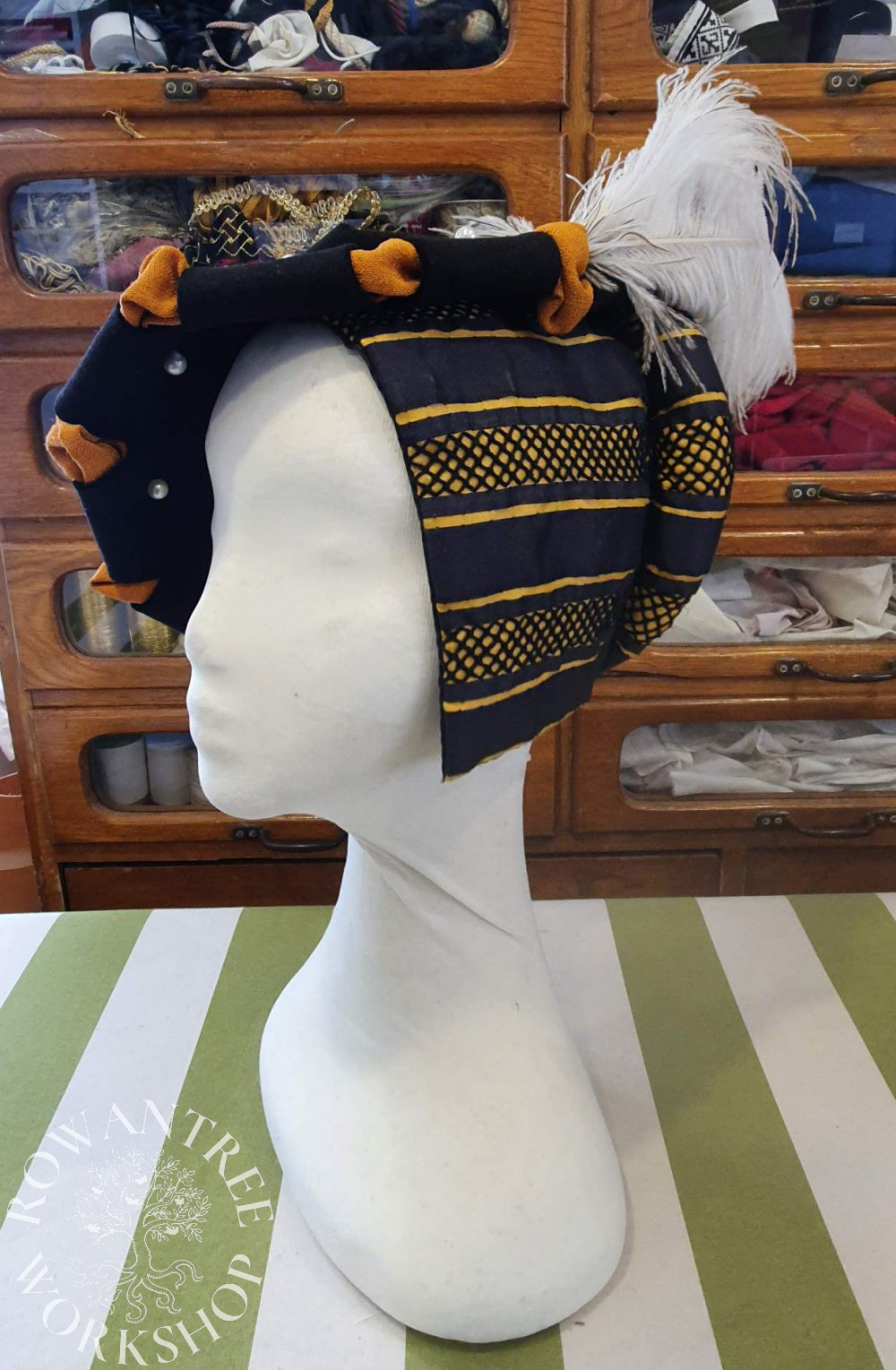
Research and Design
My inspiration came from a piece of stained glass I saw in the Germanisches National Museum, on my first trip to Germany in 1996. I loved the whole outfit and determined to make it, including the headwear. As with so many German hats, this is made of two items, worn together – a striped Haub covering the hair, with a black Barett on top.
I interpreted the Haube as a decorated cap with a built-in roll, rather than a decorated layer over a separate Wulst. I made this many years before I discovered Textiler Hausrat (1990), but this text notes that Hauben were made of many materials, including silk embroidered or needle-worked with silk yarns.
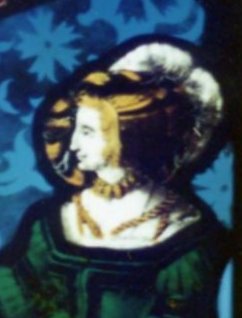
c1530-35 (detail).
Photo: Robyn Spencer
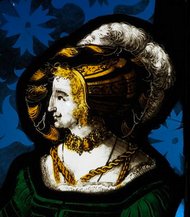
c1530-35 (detail)
Source: GNM
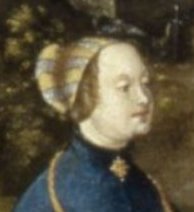
Source: Wikimedia
My photo was a bit fuzzy, so I interpreted the front of the Haub as being square cut (a northern style, although this is southern). With better images and other information now available, I think that it is more likely cut with a curved front, although less extreme than in the painting by Martin Schaffner.
The window only shows the brim of the Barett, which is decorated with gold fabric. With the clearer image, I can now see this is probably wrapped over each cut brim section, but at the time I decided it was fabric between the brim sections.
Construction
I made the Haube from a heavy gold satin, with a built-in horseshoe roll at the back. The decoration is made by couching wide and narrow black ribbon to the satin, with embroidery between. I laid heavy silk threads in a grid, couching them down at each intersection to form a net effect.
The Haube is lined in black linen, and I wear a tight black linen coif under it, to keep my hair from showing.
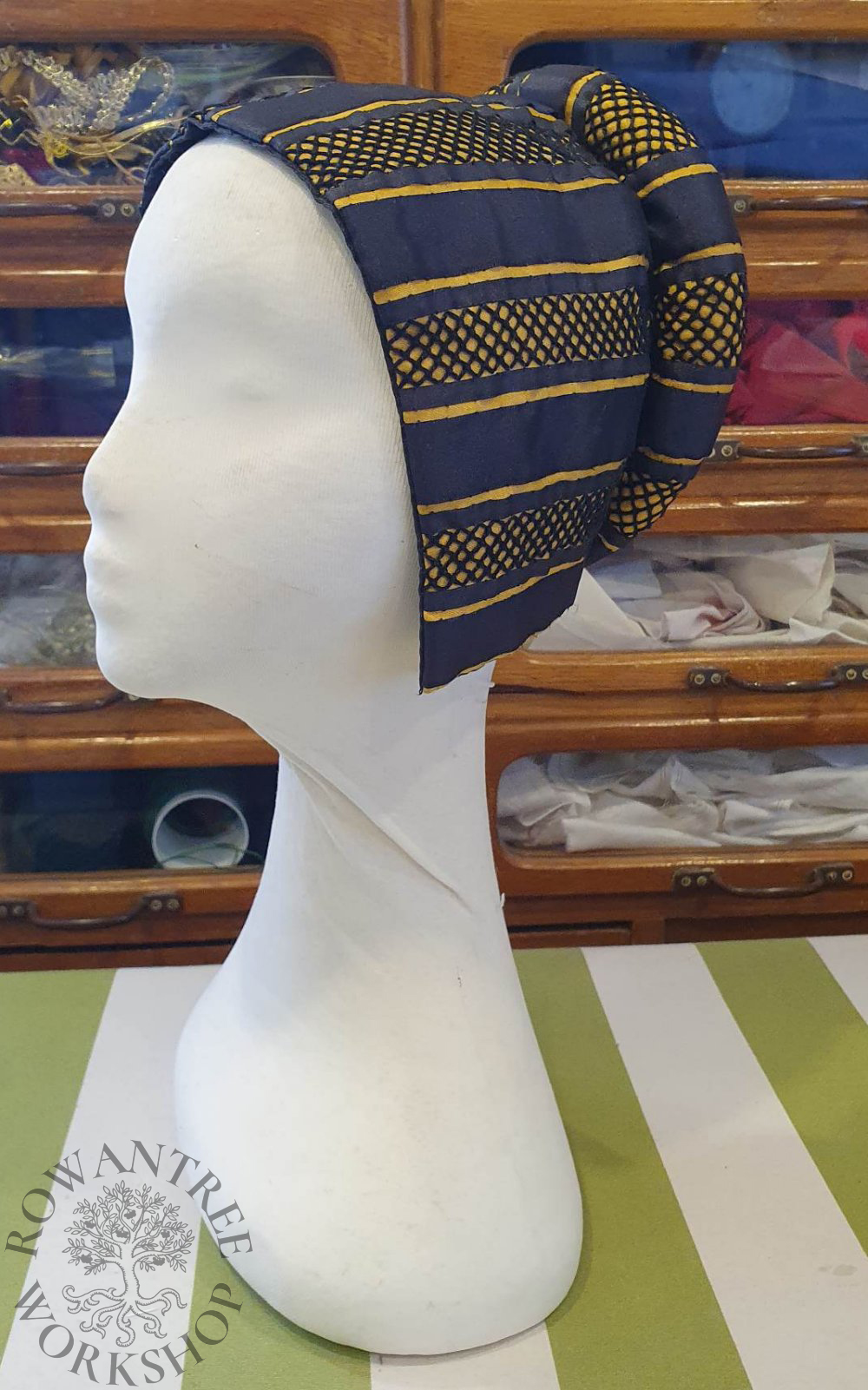
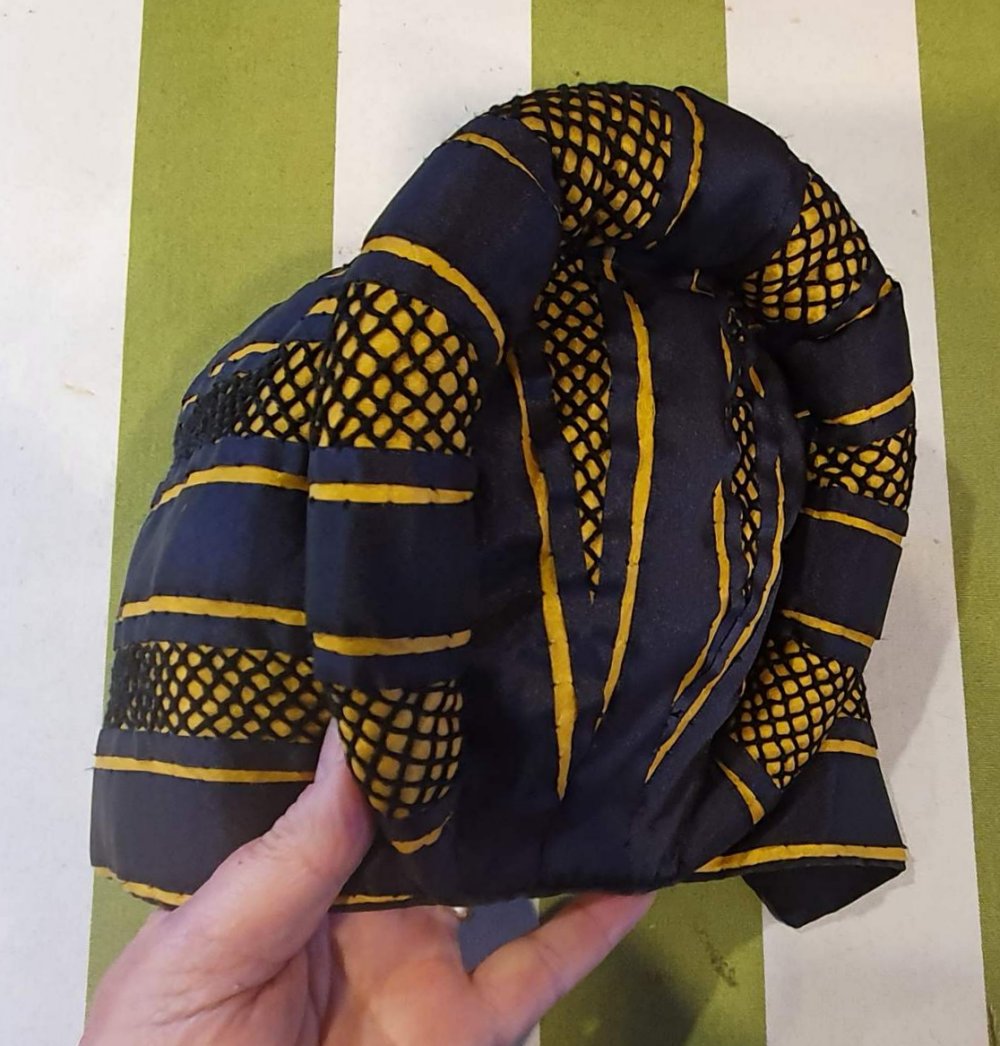
The Barett is made from a black felt hood. I knew nothing about working with felt at the time, so I simply slashed across the crown, cut out triangles and folded the four flaps under each other and sewed them down. This reduced the crown height to a useful level.
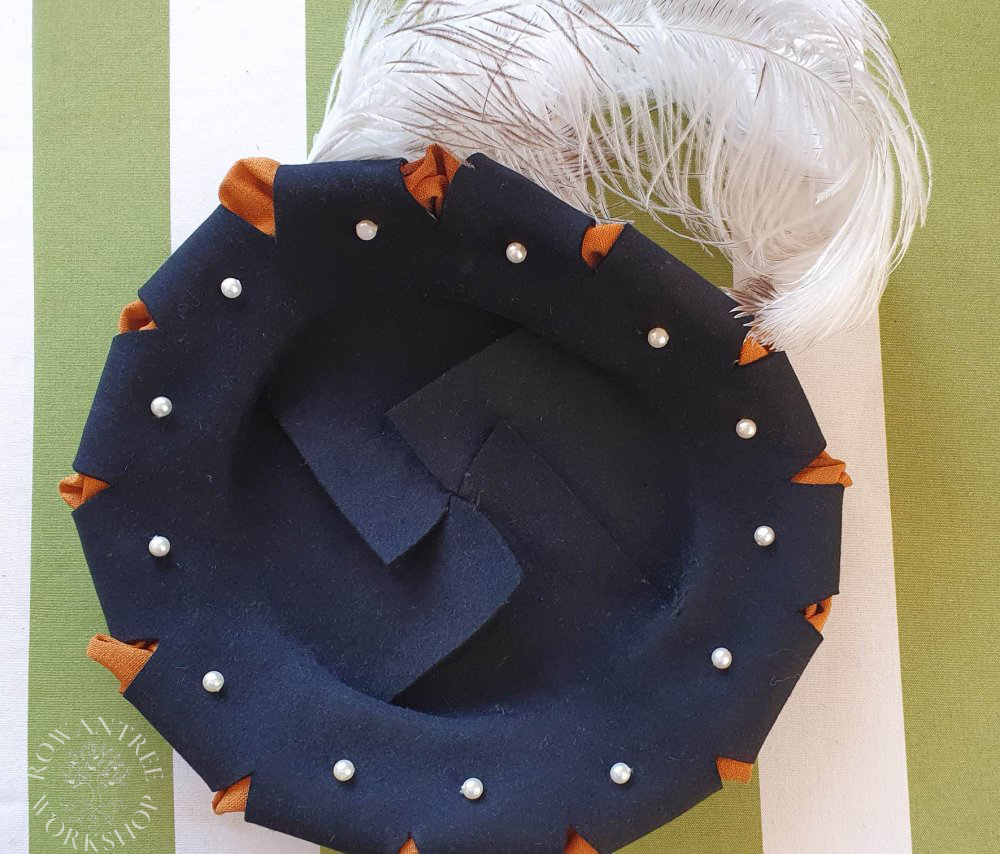
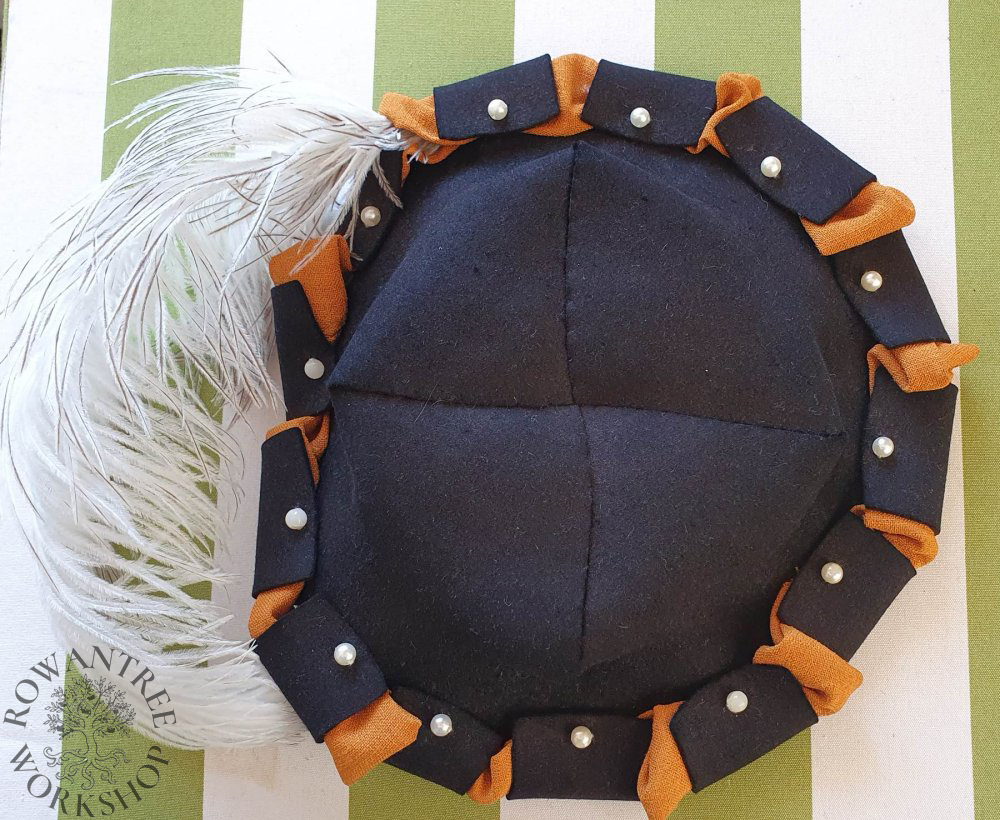
Then I cut wedges out of the brim and folded them back. I can’t recall why I secured them with pearls – there is no such detail in the window, and it is not really appropriate for the class level! Then I threaded some dark gold cloth through the sections in the brim, and added a feather.
I’ve worn this headdress for over 20 years. I still like it!

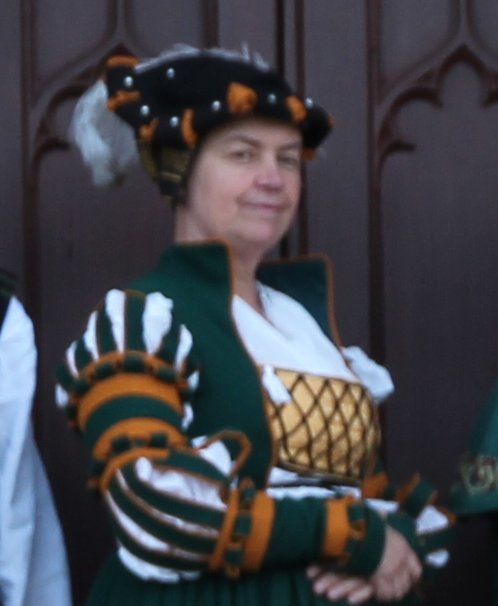
Afterthoughts
As noted above, with a higher res picture of the Zürichsee window, I can see that the Haube does not have the square front corners, which is more of a Netherlandish style. If I was making it again, I would go for a curved front. And I would be using natural materials, rather than synthetics.
For the Barett, I would now cut the crown off, shorten it, steam and shape and then reattach before slashing the brim.

